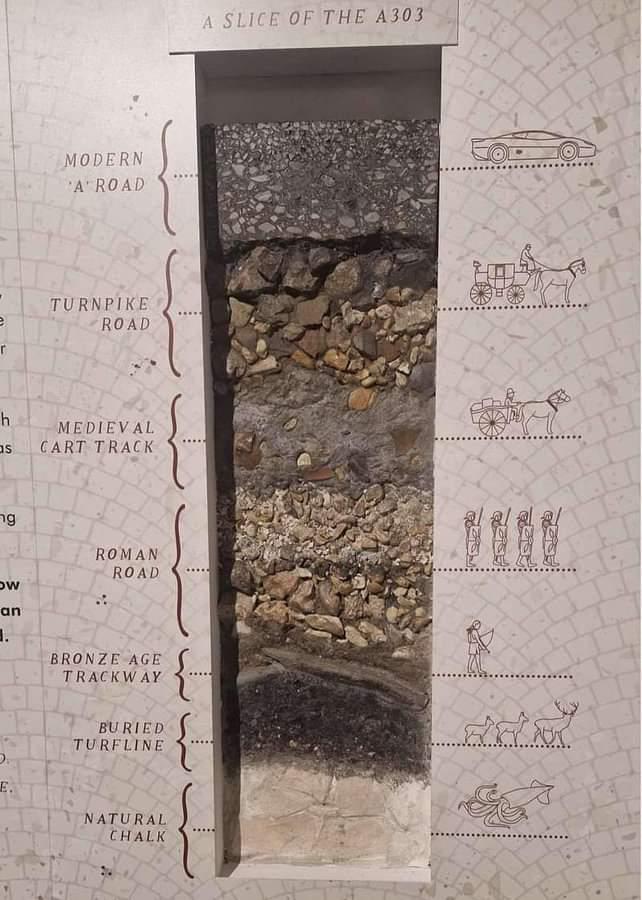this post was submitted on 27 Aug 2024
439 points (98.7% liked)
interestingasfuck
1297 readers
1 users here now
Please go to !interestingshare@lemmy.zip
founded 1 year ago
MODERATORS
you are viewing a single comment's thread
view the rest of the comments
view the rest of the comments

I'm willing to bet that this is no cross section of any road, but by "slice" they mean of things that were historically at that spot.
Nope, this is legitimately just pulled straight out of the ground when they were doing roadworks on it.
Any actual link that covers this? Or am I to just believe some random person on the Internet? Also, why would the ancient roads be built so far down?
When they were built, they were probably on top.
Understood. So are the current roads feet above the ground? If not, why are the others so far down?
I also assume this means you don't actually have a link explaining this.
I don't have a link for you or anything but just want to point out that it's not just roads that are covered over time, otherwise archeology would be basically non-existent. For example, if ancient Roman stuff is commonly found in the UK ~5 ft or more under the ground, it makes sense that the roads would also be 5 ft under ground.
A lot of the roads that the Roman's used are routes that are still in use today. If you're going to pave a road from point A to point B, and there is already an old road there, might as well just build the new road right on top of the old one. You even out the sides of the road when building it, add some natural/artifical sedimentation over the next hundred years, and boom, the road and the whole area around the road is a few inches higher than it used to be.
This happens a few times over a few centuries and you end up with something that looks like the above. I'm not saying that that is an actual slice of a real road, but I don't think that it necessarily means that it's not possible.
https://www.yac-uk.org/news/ask-the-archaeologist-why-are-the-things-from-the-olden-days-under-the-ground
I can't find a source but I this is in the stone henge musuem. I've seen it in person and asked that exact question.
Also it's pretty common for roads in places like the UK to just be built on top of each other like this.
It's not specifically about roads per se, but I HIGHLY recommend Jacob Geller's video "After a City is Buried", which touches on how surprisingly common it is for us to just build new stuff directly on top of old stuff.